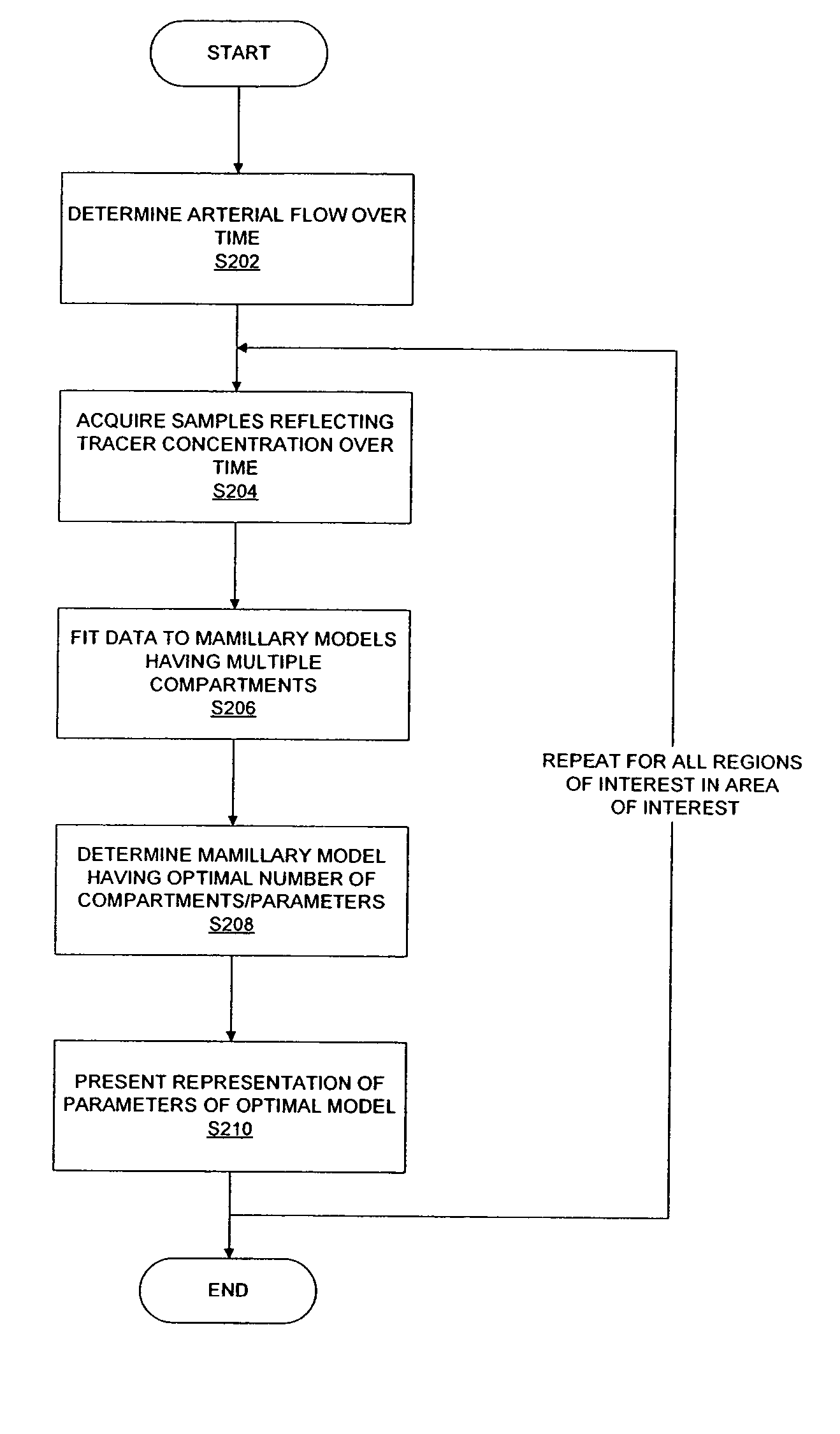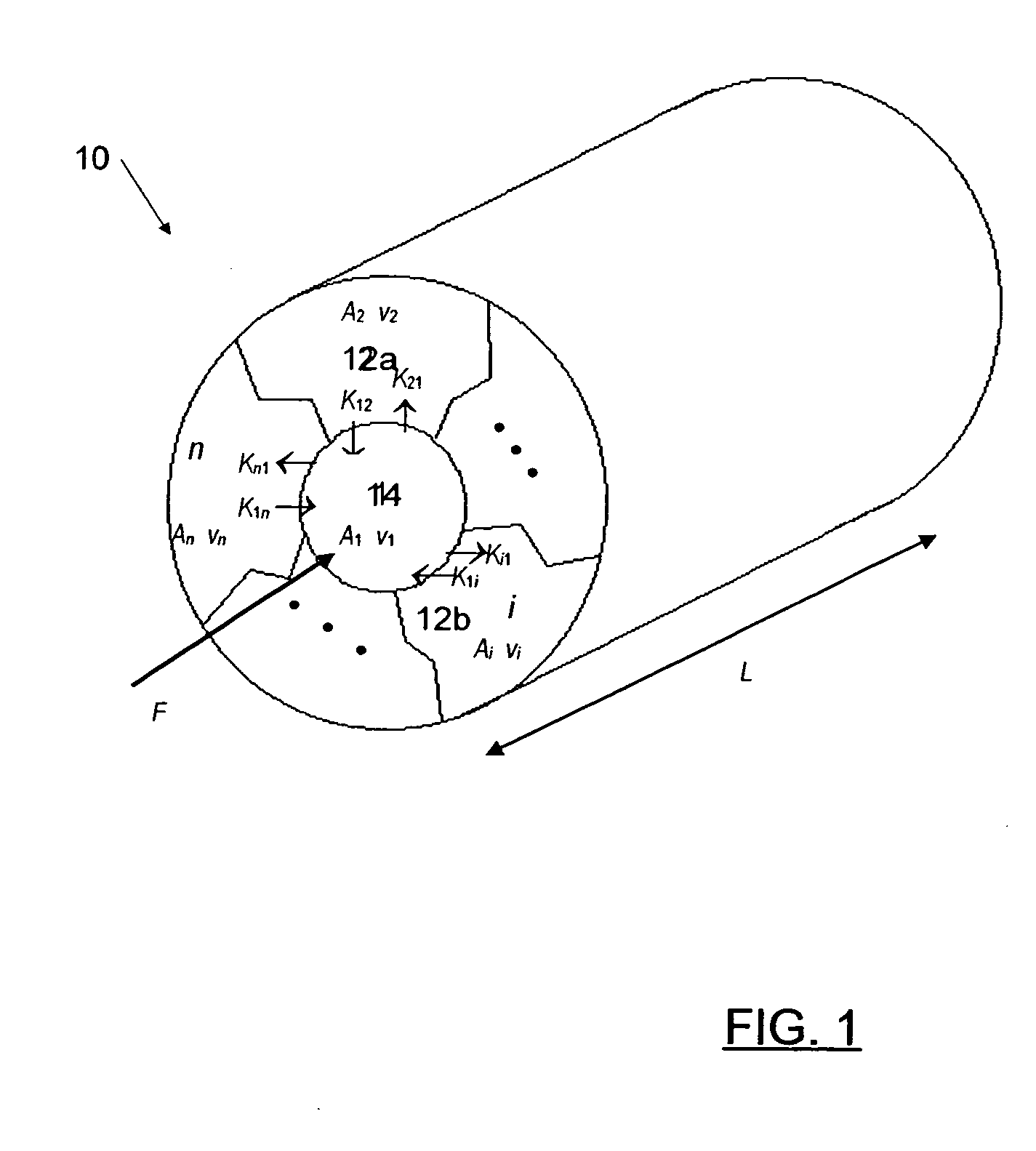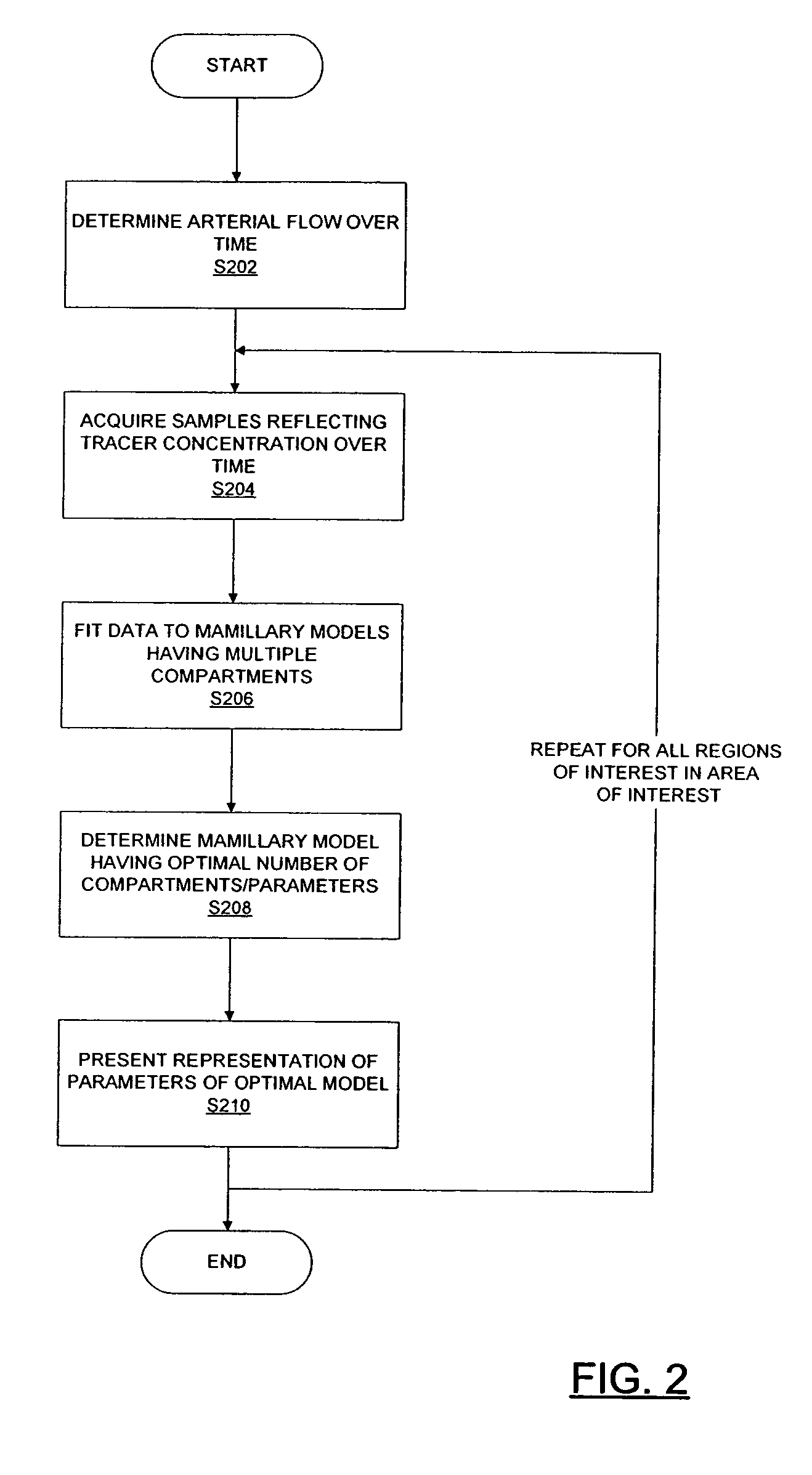Dynamic contrast enhanced imaging using a mamillary distributed parameter model
a distributed parameter and dynamic contrast technology, applied in the field of medical imaging, can solve the problems of inability to resolve microscopic disease, inability to predict clinical outcome, overlap between malignant and benign inflammatory tissue,
- Summary
- Abstract
- Description
- Claims
- Application Information
AI Technical Summary
Benefits of technology
Problems solved by technology
Method used
Image
Examples
Embodiment Construction
[0022] As noted, DCE imaging typically involves the intravenous introduction of a contrast medium (or tracer) in the fluid blood stream and subsequent sequential imaging to simultaneously monitor the course of the tracer concentration in the tissue in a region of interest and the feeding artery (or fluid source) over time.
[0023] For example, for CT imaging, tracer concentration in a region of interest can be estimated by averaging the sensed concentration in a region of interest. For example, the tracer used in CT imaging is commonly iodine based. In the CT image, the intensity value is directly proportional to the concentration of tracer. For MRI, other techniques may be employed: known transforms correlate image intensity and tracer concentration.
[0024] Mathematically, a relationship between tracer flow in the tissue Ctiss(t) at a region of interest, and the feeding artery Ca(t) can be derived by assuming a causal, linear time-invariant (LTI) system. The response of the system (...
PUM
 Login to View More
Login to View More Abstract
Description
Claims
Application Information
 Login to View More
Login to View More - R&D
- Intellectual Property
- Life Sciences
- Materials
- Tech Scout
- Unparalleled Data Quality
- Higher Quality Content
- 60% Fewer Hallucinations
Browse by: Latest US Patents, China's latest patents, Technical Efficacy Thesaurus, Application Domain, Technology Topic, Popular Technical Reports.
© 2025 PatSnap. All rights reserved.Legal|Privacy policy|Modern Slavery Act Transparency Statement|Sitemap|About US| Contact US: help@patsnap.com



